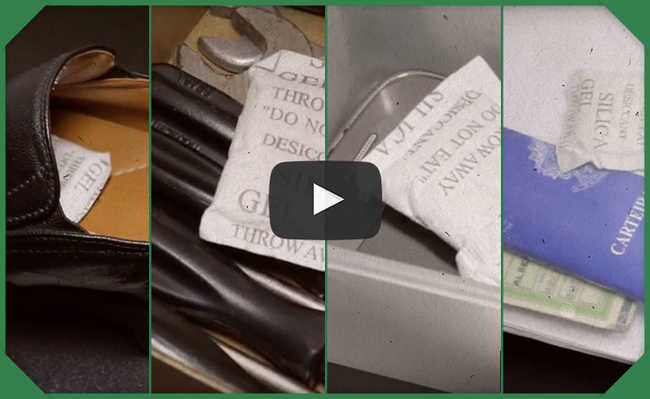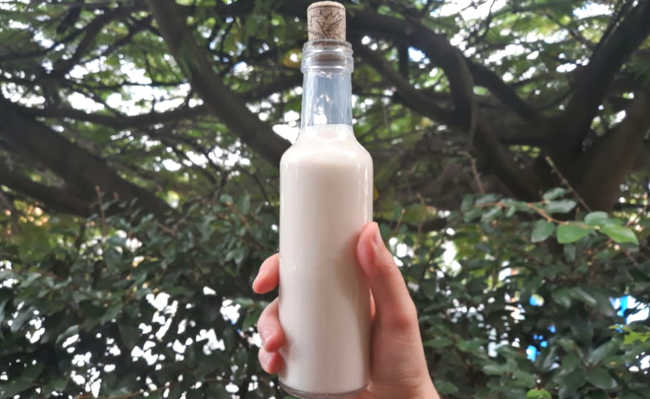What is co-processing and what are its environmental advantages?
Co-processing is a profitable and environmentally suitable alternative for the final disposal of industrial waste

The intense generation of solid waste represents one of the biggest challenges of our time. Due to economic and population growth and technological advances, a greater amount of waste is produced and natural resources become increasingly scarce.
Thanks to technological advances, many products are discarded even before the end of their useful life, which increases the already expressive load of solid waste that must be handled by the government. In addition, the accelerated and constant industrial production of different sectors has also generated a high amount of waste in Brazil and in the world.
In parallel, stricter legislation, such as the National Solid Waste Policy (PNRS), has led companies to assume responsibility for the environmental consequences of their operations. Such responsibilities include the environmental impact caused by the waste generated in the production process.
Thus, in view of the constant population growth and the accelerated development of industrial sectors, it is necessary to seek solutions and innovations for the proper handling and final destination of the solid waste generated. The option of reusing waste as raw material for other industries can be an attractive possibility, as it can generate a reduction in financial expenses and environmental impacts.
In this context, techniques and strategies are created in order to help the problem of waste generation and accumulation. Co-processing emerges as an interesting and valuable alternative, both from an economic point of view, as well as from an environmental and human health point of view.
Before moving on to the subject, it is also important to consider the serious environmental impacts caused by the cement manufacturing process, despite the material's importance for cities. It is estimated that, due to the intensive use of fossil fuels in the process, the cement industry accounts for about 5% of global CO2 emissions (see the article "How does the cement production process occur and what are its environmental impacts?" ).
Thus, the practice of co-processing waste in the cement industry represents a real alternative to the need for an environmentally and socially adequate final destination for waste from various industrial processes. In addition to representing a strategy to improve the economic performance of the cement industry.
But you might be wondering... What is co-processing?
What is co-processing?
The term "co-processing" establishes the integration of two processes: the burning of solid industrial waste that would be disposed of in landfills and the manufacture of items that require high temperatures in their production processes. This is mainly the case with the cement industries.
According to the Resolution of the National Environmental Council (Conama) No. 264/1999, which provides for the procedures and specific criteria for co-processing, the co-processing of waste in cement production kilns is defined as a technique for using industrial solid waste from the processing of these, in partial replacement of raw material and/or fuel in the clinker kiln system (read more in "Clinker: know what it is, what are its environmental impacts and alternatives").
In short, it is possible to say that co-processing is the process of waste destruction in the manufacture of products that require high temperatures in their manufacture. It is a technology for burning waste from various industries in kilns that transform clay and limestone into clinker.
This technique can contribute to the preservation of the planet and its natural resources, since it replaces traditional raw materials and fuels mainly required for the manufacture of cement, providing an adequate destination for hazardous waste.
In some cases, the term co-incineration can also be used, in reference to this technique, when the waste is used for the purpose of acting as a substitute fuel and its burning has the sole purpose of generating energy. When the waste is used as a heat source and also as a raw material, and can be incorporated into the clinker, the most appropriate term is co-processing.
For a better understanding of the meaning of co-processing, its functioning and its importance, it is necessary to clarify the ideas and definitions of what the term 'waste', mentioned above, is.
Law No. 12,305/10 institutes the National Solid Waste Policy (PNRS), representing a milestone in the sector, as it deals with all solid waste (materials that can be recycled or reused), whether domestic, industrial, agricultural, etc. , and also for dealing with tailings (items that cannot be reused), encouraging correct disposal, in a shared way by integrating and attributing responsibilities to the government, private initiative and citizens.
Tailings is a specific type of solid waste (know the difference between waste and rejects). According to the National Solid Waste Policy (PNRS), when all possibilities for reuse or recycling have already been exhausted and there is no final solution for the item or part of it, it is a waste, and the only plausible possibility is forward these materials to an environmentally adequate final disposal for each case (licensed landfill, incineration or co-processing).
In this context, the co-processing technique emerges as a definitive solution for the disposal of different types of waste, offering a useful and adequate destination for these materials when there is no alternative for recycling or reuse. In some cases, when the market condition is not favorable to recycling and reusing certain solid wastes, they can also be sent to the co-processing process (as in the case of tires).
Finally, although the co-processing process can pose risks to health and the environment, it still has several advantages compared to landfills and the practice of incineration.
How it came about in Brazil
The emergence of co-processing in Brazil dates back to the time of the world oil crisis. In response to the crisis triggered by the recession in the Brazilian economy in the late 1980s, the cement sector experimented with several strategies, including the co-processing technique. Thus, it emerged as a method to improve the economic performance of the cement industry, allowing for a lower expenditure on energy consumption.
In this context, the co-processing of waste began in the early 1990s, in the cement plants of Cantagalo, in the state of Rio de Janeiro. Since then, this technology has been used, in compliance with legislation from environmental control agencies and health authorities.
The co-processing of industrial waste in clinker kilns is, therefore, a practice that began at the time of the financial crisis and is currently being seen as a coordinated action between the cement industries and the industries that generate waste, being more contextualized in the environmental sphere and less in the energy/financial sphere.
Therefore, it is considered by waste generators, with approval from environmental agencies, as a plausible solution for the proper final destination of their waste.
What does the legislation say?
In legal terms, the main federal regulations for the control of emissions from cement kilns are Conama Resolution No. 264, of August 26, 1999, which provides for specific co-processing procedures and criteria, and Conama Resolution No. 316, of 29 October 2002, which provides for procedures and criteria for the operation of waste thermal treatment systems;
According to Conama Resolution No. 316/2002, the co-processing of industrial waste is the reuse of material or substance that is useless or not subject to other economic use, resulting from industrial, urban, agricultural activities, etc., in heat treatment processes whose operation is performed above 800°C.
Conama Resolution No. 264/1999 provides for the entire process for the licensing of clinker kilns for waste co-processing activities, as well as the maintenance of environmental quality. It contains all the procedures and requirements for a cement manufacturing process to be suitable for the co-processing activity.
Another relevant law for the practice of co-processing is Conama Resolution No. 258, of August 26, 1999, which provides for the proper handling of tires, and stipulates shared responsibility between manufacturers and importers of these materials, as well as distributors, resellers, reformers and final consumers, to collect and give correct final destination.
It is important to highlight that the National Environmental Council (Conama) recommends that, for the burning of waste in clinker kilns, the cement factory must have all the technical and environmental conditions to meet the required emission standards. In this sense, it must have: modern production line, stable, regulated and optimized manufacturing process; highly efficient devices for retaining particulate matter and washing gases generated in combustion; and burners specially designed for different types of fuels.
What residues and rejects can be co-processed?
Brazilian legislation (Conama Resolution nº 264/1999) establishes two classes of residues that can be co-processed in industrial processes: residues that can partially replace the raw material, if they have similar characteristics; and waste with high energy power that can be used as alternative fuels.
Generally, both classes are treated in clinker kilns, due to the characteristics of the process, such as the long duration and high temperatures reached, which guarantee the destruction of residues and allow some heavy metals to be incorporated into the clinker structure, not being emitted into the atmosphere.
Previously selected materials are used, which are not capable of being recycled (rejects), or which are not subject to other economic use, and which have a high calorific value and which must be totally eliminated.
According to some national companies, in this process, neither liquid nor solid effluents are created, since the ash that would previously be sent to landfills is now incorporated into the clinker without changing its priorities.
Thus, several materials can be co-processed, such as tires, grease, steel residues, used oils, resins, glues, plastics, paints, sawdust, vegetable waste, contaminated soil, contaminated wood, and sludge from sewage treatment plants. The use of hospital, radioactive, gross domestic, corrosive materials, explosives and pesticides is not allowed.
Today, the main residue used in Brazil for co-processing is waste tires. This type of initiative alleviates both environmental and public health problems. Specifically on tires and rice husks, researchers Miguel Afonso Sellitto, Nelson Kadel Jr., Miriam Borchardt, Giancarlo Medeiros Pereira and Jeferson Domingues, from Unisinos, published an article in Ambiente & Sociedade magazine (read the full article here) about the reuse of these materials in cement production.
Advantages of co-processing
There are several advantages in using the co-processing process, such as:
- It provides a lower production cost, as it introduces waste from various industrial segments as fuel and/or raw material, replacing required conventional fuels. Thus, in this process, it is possible to profit from residues and rejects that would be discarded in landfills.
- Offers a safe destination for hazardous waste, meeting legal requirements. It becomes a definitive solution for some waste; since in the process they are completely destroyed and/or incorporated as raw material in the manufacture of cement, without generating slag and/or ash.
- With the total elimination of waste, there are no risks with environmental liabilities. Thus, these materials do not cause the same damage that they could when discarded in inappropriate places.
- Use of the waste's calorific power (thermal destruction) to generate thermal energy.
- There is little need for additional investments in a clinker kiln, as these are suitable for co-processing waste. Thus, the clinker kiln atmospheric emission control equipment is suitable for controlling emissions when solid waste is being co-processed.
- Decrease in the emission of particulates, SOx and NOx to the atmosphere. In addition, of course, to reducing pressures on non-renewable natural resources.
- Even though the destination in specialized landfills is a legally accepted option, the destination for co-processing is a nobler destination. With co-processing, there is a reduction in the disposal of solid waste in landfills, consequently increasing the useful life of landfills.
Given these advantages, it is undeniable that using waste for other activities is, without a doubt, giving it a more useful and intelligent destination.
Environmental risks and impacts
The practice of co-processing can pose risks to the health of workers and the environment due to the formation and emission of polluting particles, volatilization of heavy metals, and also the risk of accidents during the transport of hazardous waste from the generating source to the cement industry, where they will be burned.
It is also considered that unsatisfactory pre-treatment and selection of waste can result in undesirable emissions into the atmosphere, containing dioxins and furans, resulting from the presence of plastics containing chlorine (PVC) and heavy metals.
A study alerts to the possibility of contamination of national or imported cements, from manufacturing routes, often unknown, where alternative fuels, such as waste tires, can be permanent undeclared sources of environmental contamination and of the cement produced.
One of the major problems in tire co-processing is the presence of sulfur in the rubber structure. Also, in some cases, when the sulfur used in the tire comes from sulphide ores, arsenic contamination can occur, which volatilizes at the furnace temperature, causing serious environmental problems. Therefore, when tires are co-processed, restrictions on the source of sulfur must be applied.
Another risk of using tires as waste to be co-processed is triggered when the import of used tires increases, increasing the amount of this waste in the country, and increasing the likelihood of risks.
In addition, with the use of different types of waste as substitutes for fuels and raw materials, the possibilities of combinations or mixtures of these fuels - known as blends. Thus, the composition of gas and dust emissions into the atmosphere is diversified, as well as the types of contaminants that can be retained in the product sold, according to researches.
During "blending", safety conditions are extremely necessary, otherwise employees may manually carry out activities with exposure to multiple products of high toxicity.This risk is further increased by the chances of accidents or poisoning by chemical components that arrive in broken packages and without proper identification. For these reasons, it is necessary to redouble the attention in the process - and the company needs to provide all the security conditions and organize lectures about it.
Final considerations
The practice of co-processing waste in cement kilns has many advantages, but there are also risks. It is prudent, with the development of more studies on the subject, to elucidate the aspects of the real contribution of waste co-processing and the establishment of the limits and risks associated with it.
New studies could contribute to the timely assessment of the incidence of other diseases and endocrine dysfunctions in the population exposed to contamination generated by coincineration. In parallel, State initiatives that increase institutional capacity and cooperation between agencies responsible for monitoring industrial activities, such as state environmental agencies, State and Federal Public Prosecutors, Health and Labor Secretariats, seem to be opportune. Environmental Surveillance, among others.










